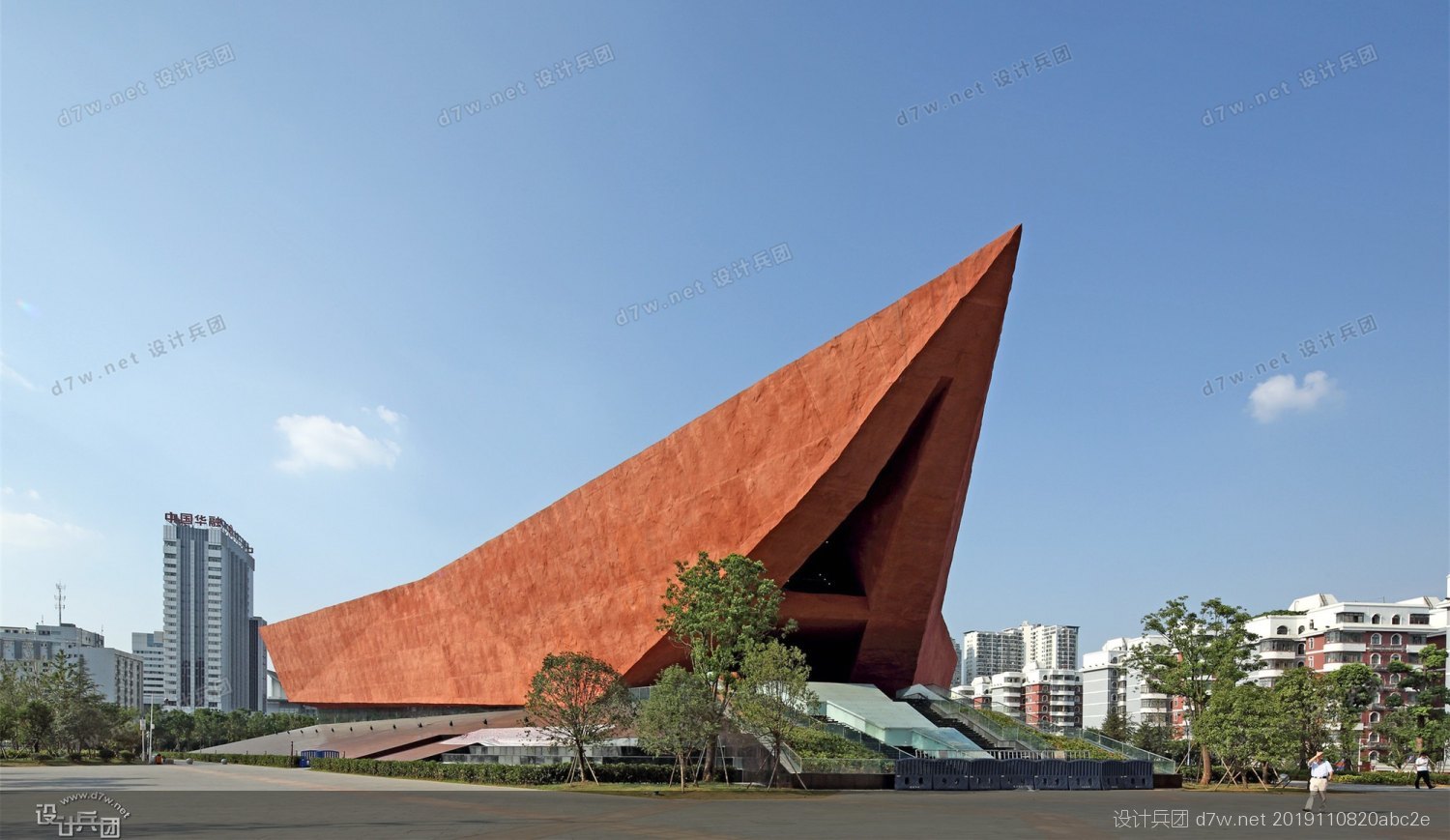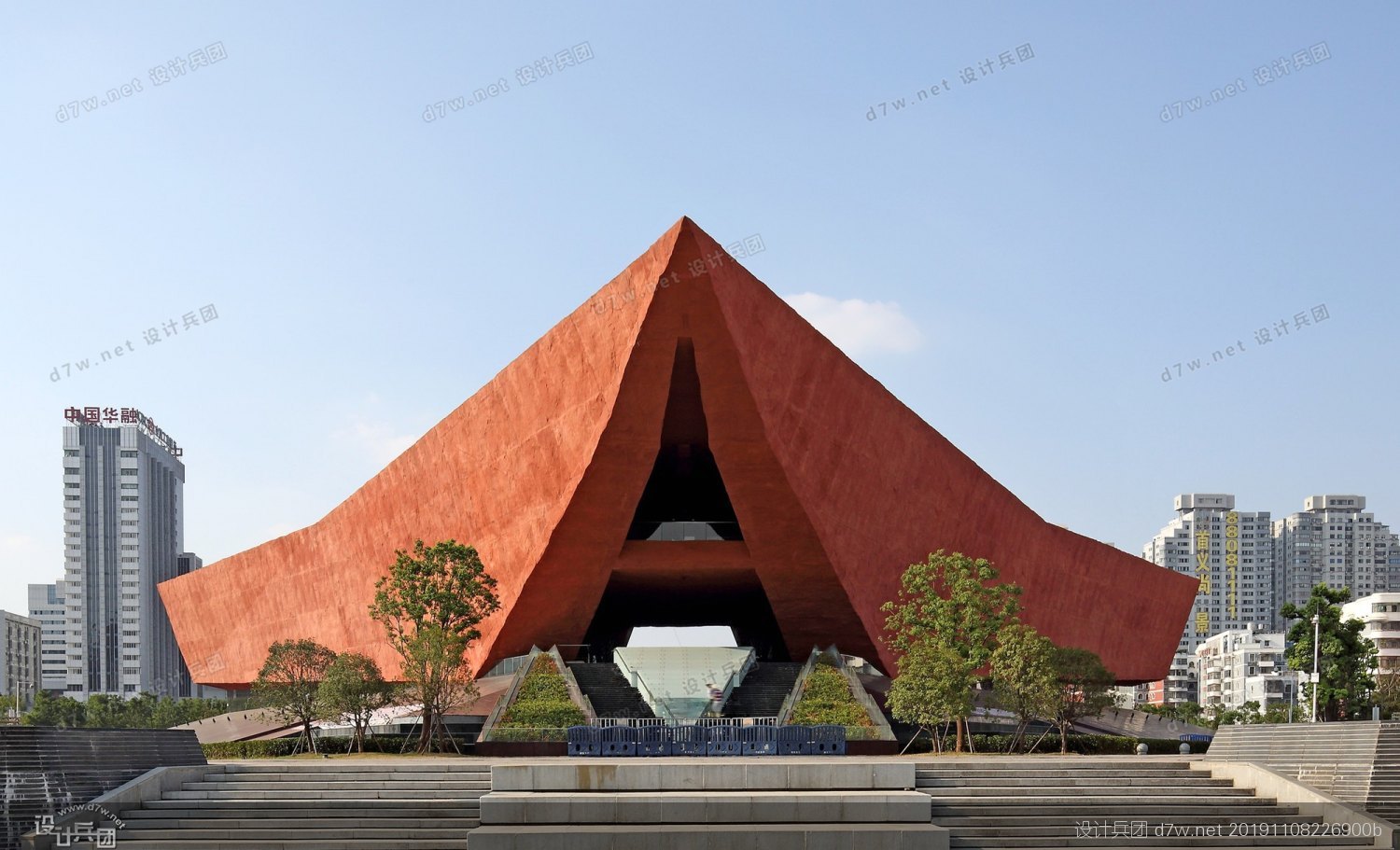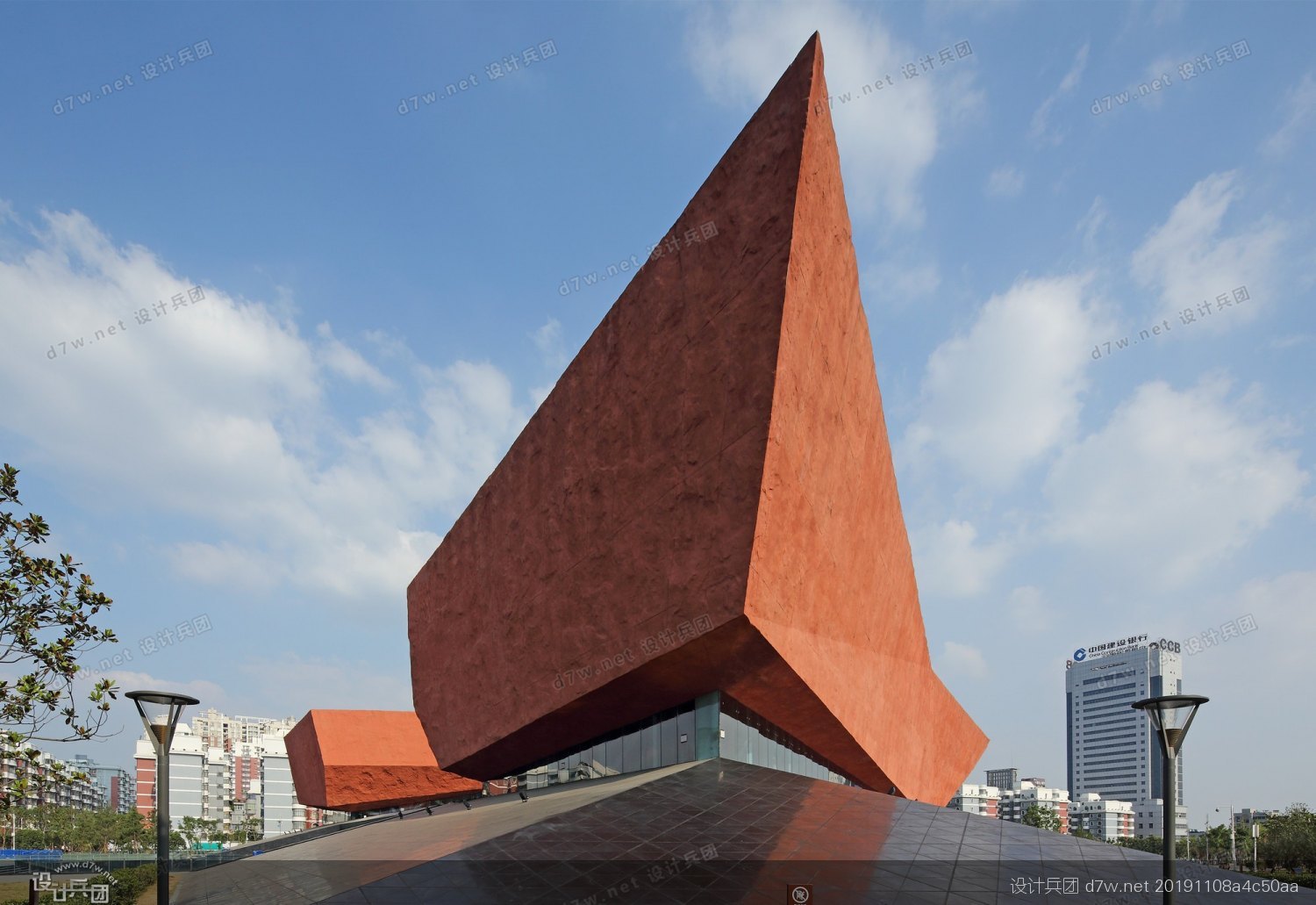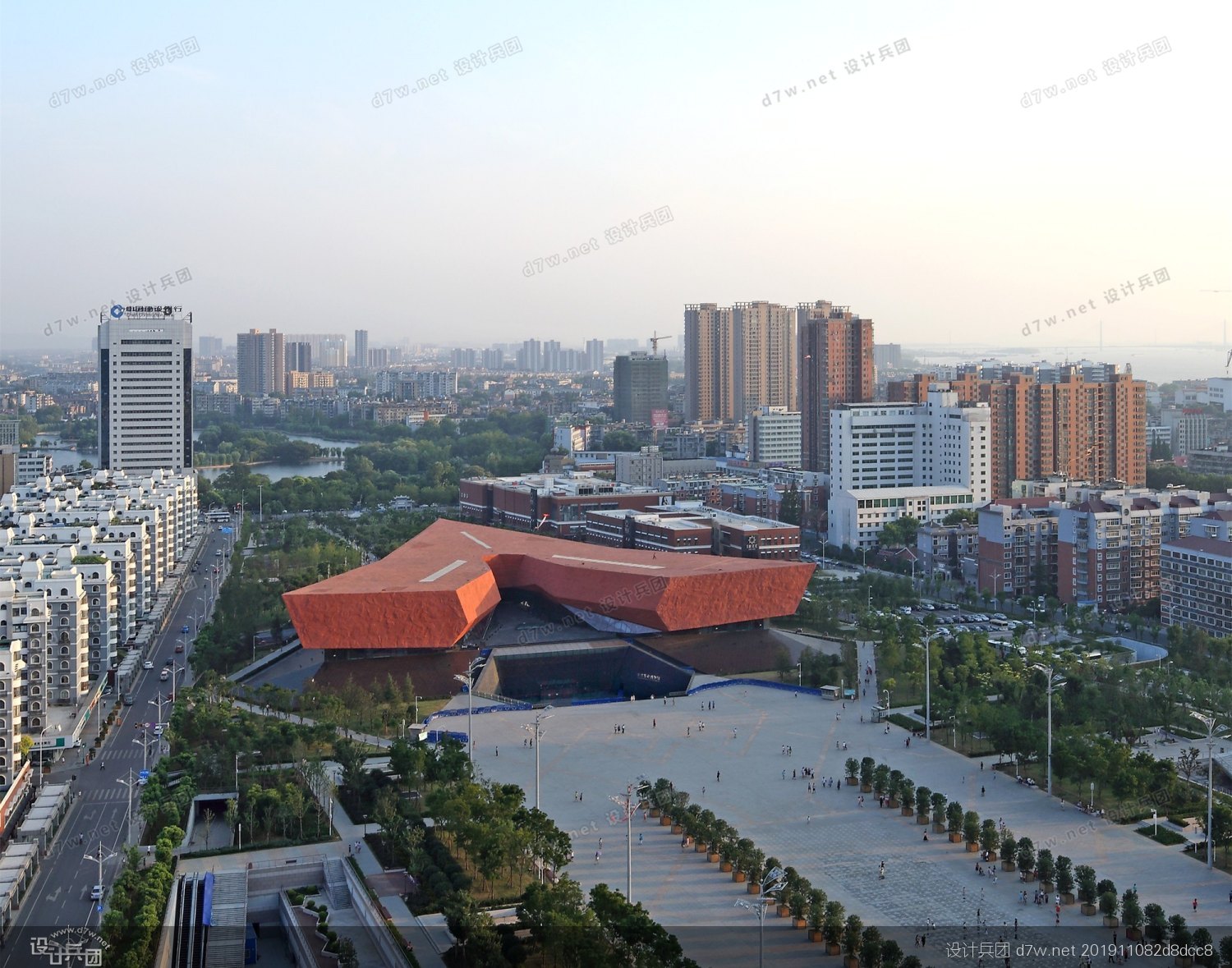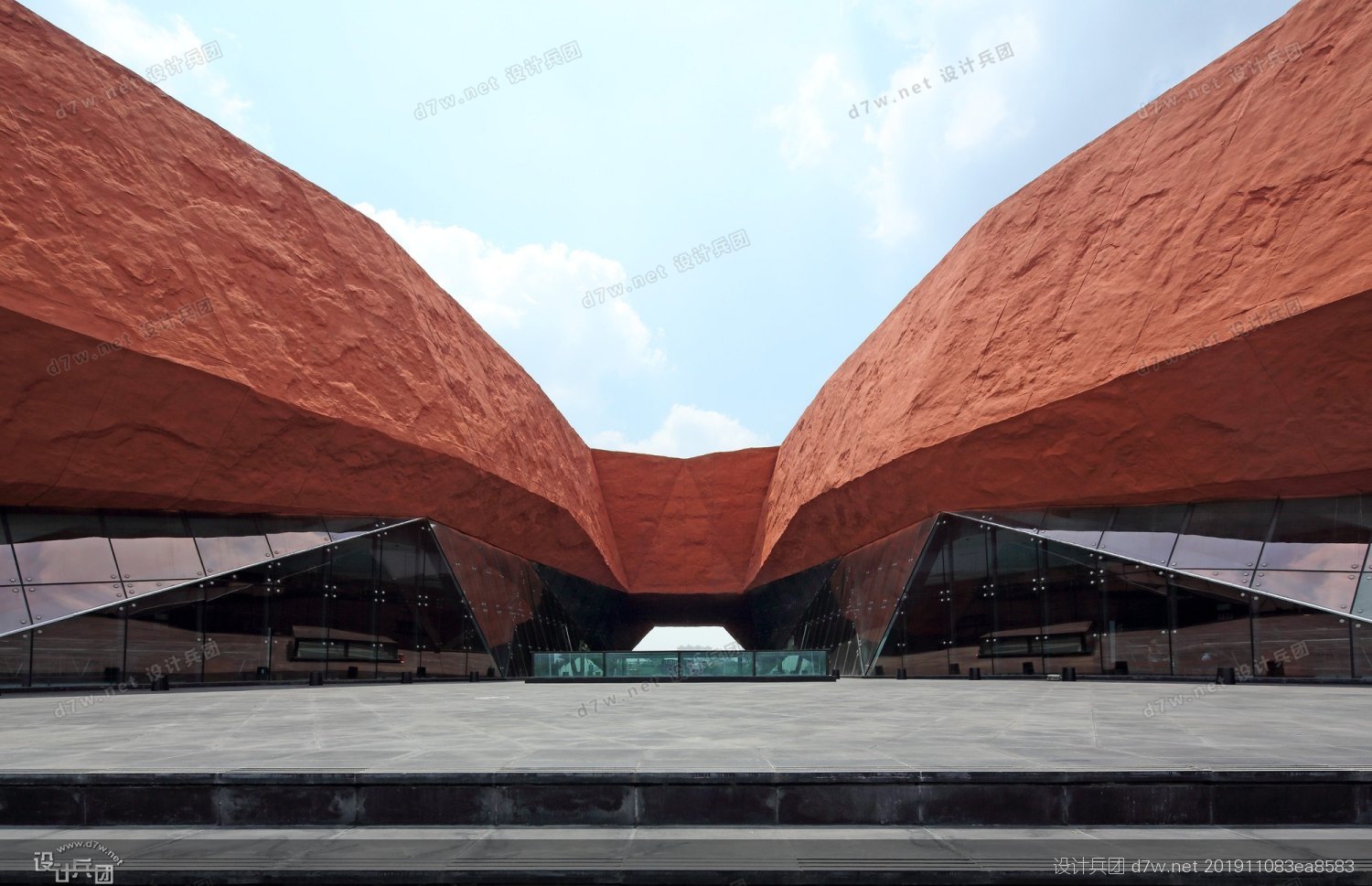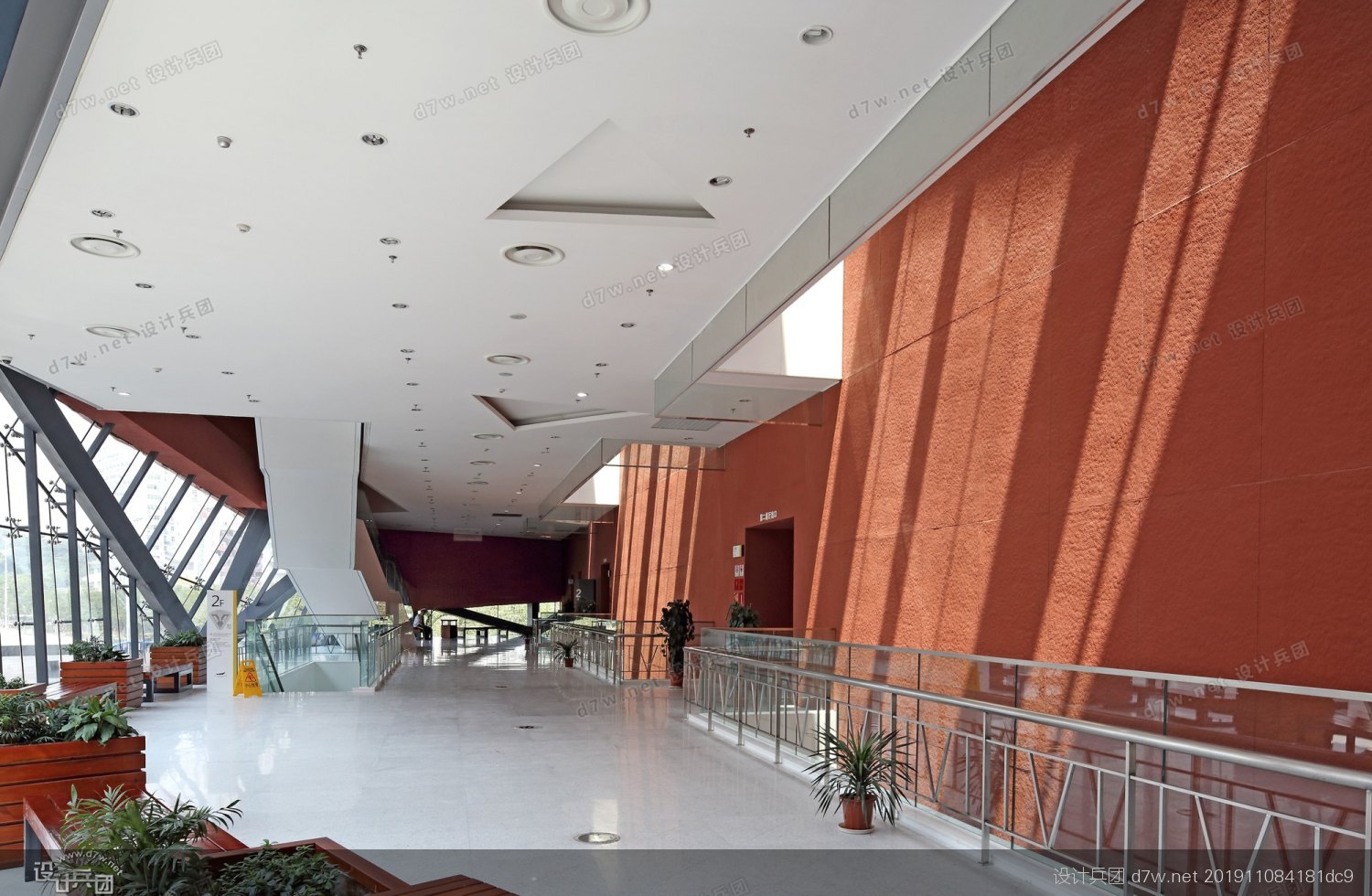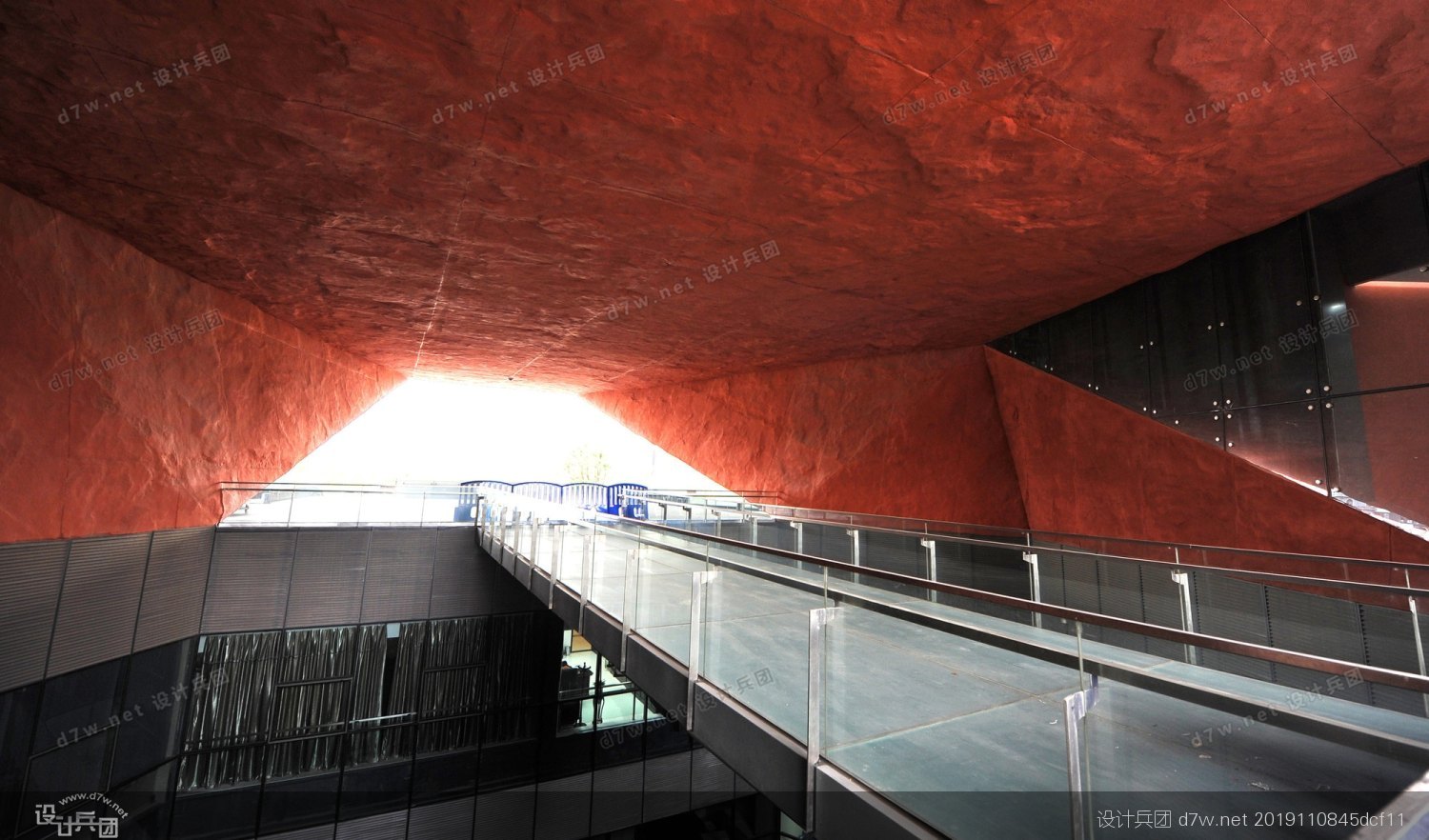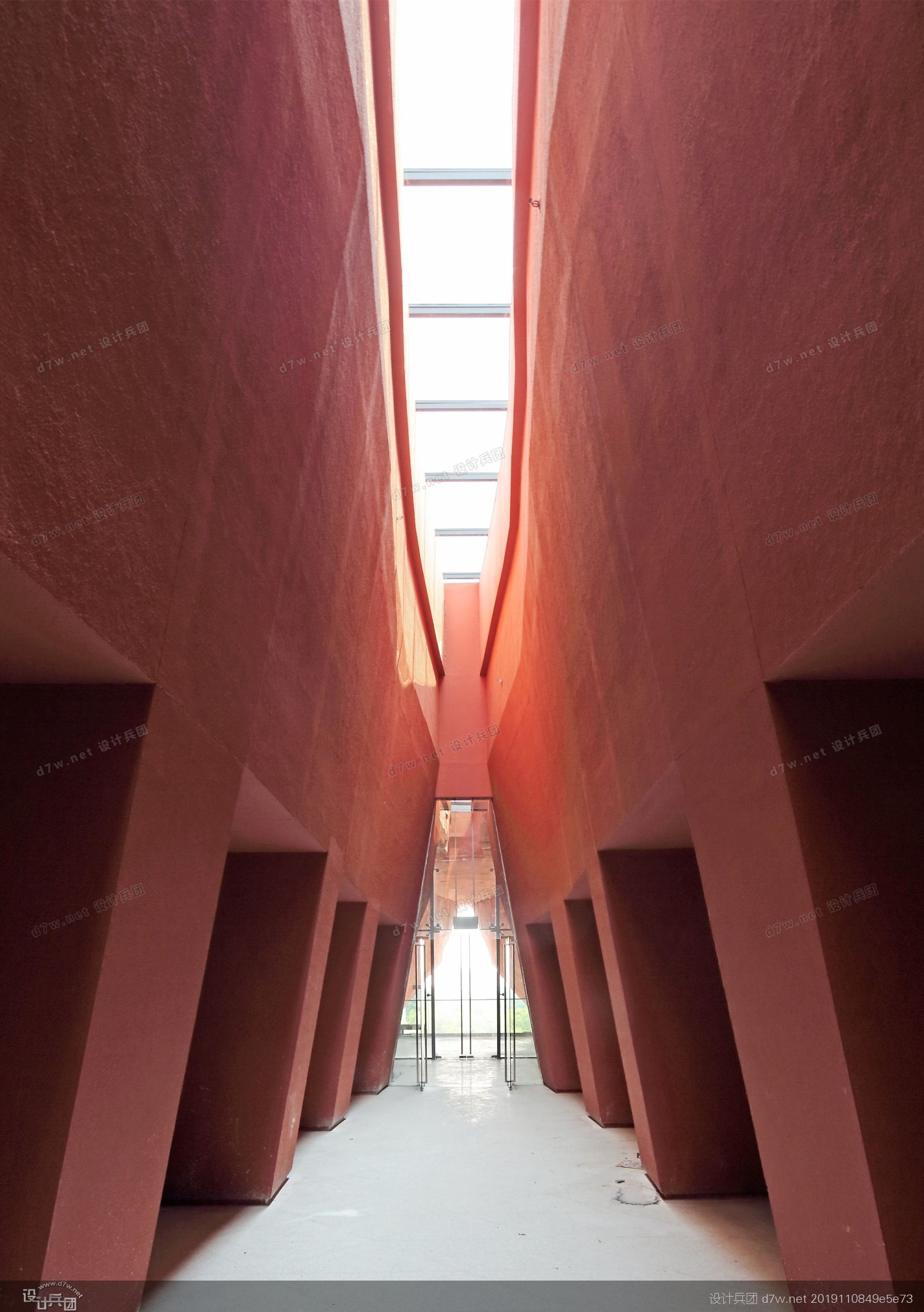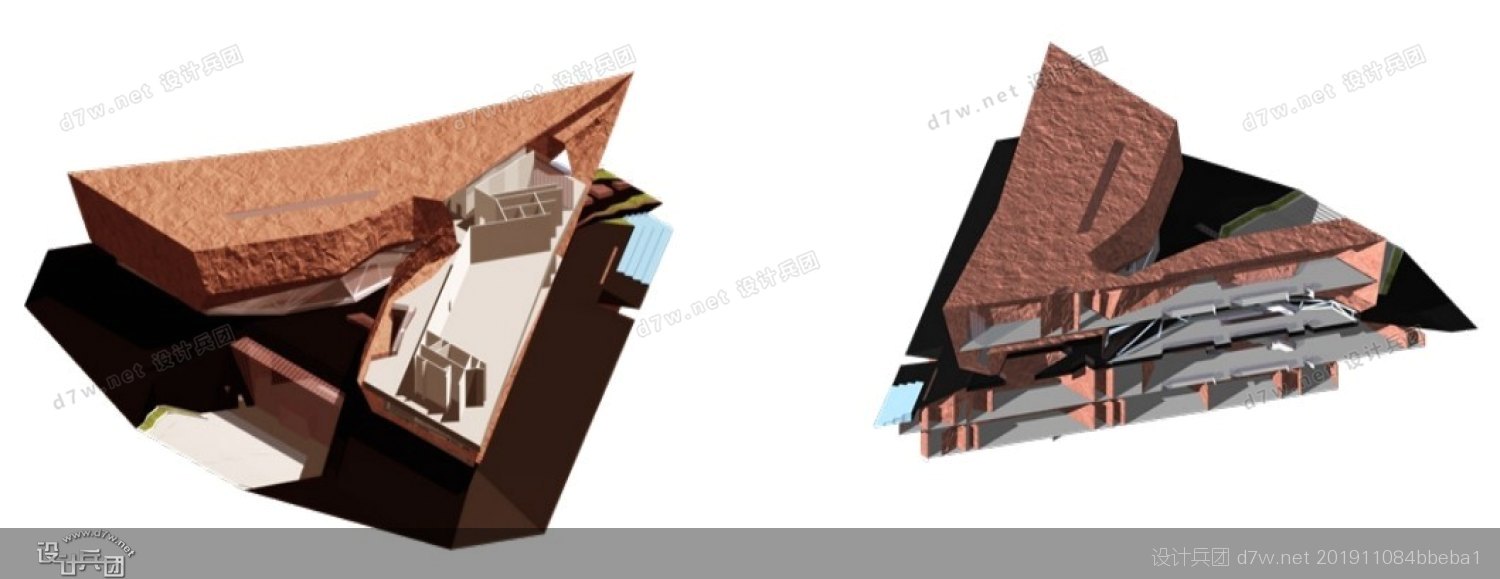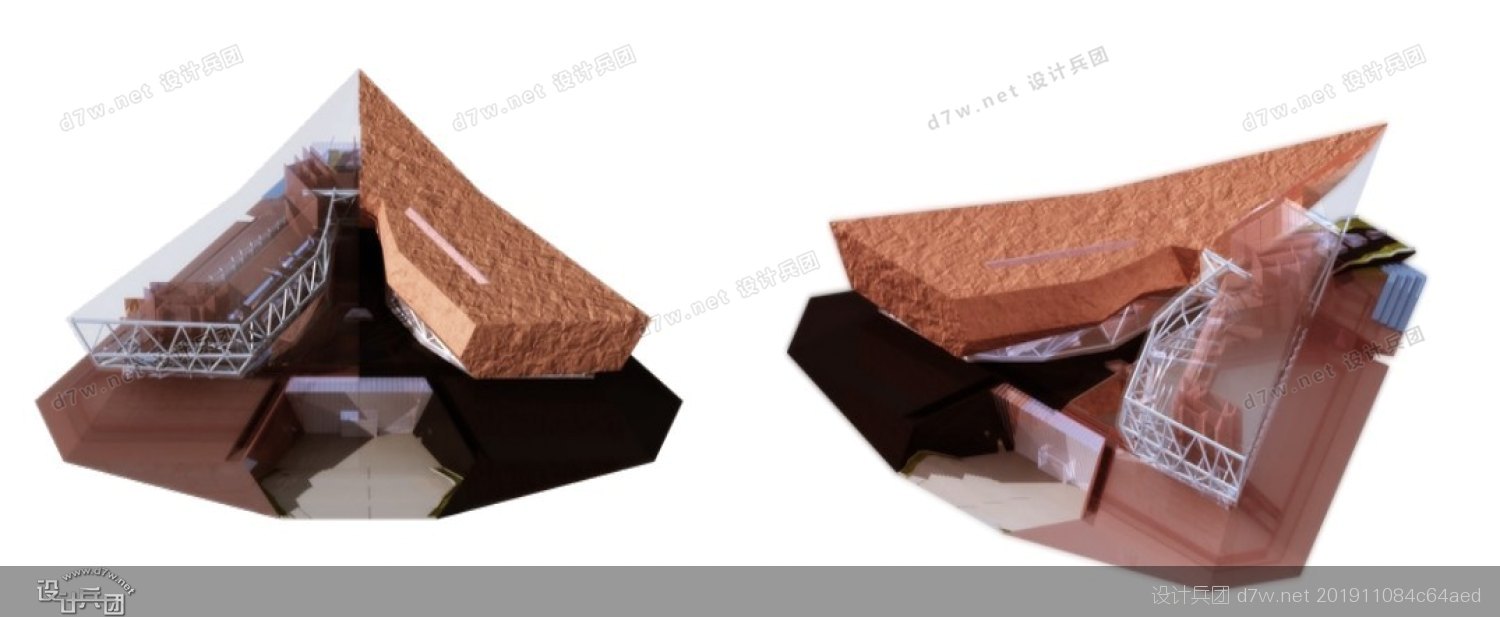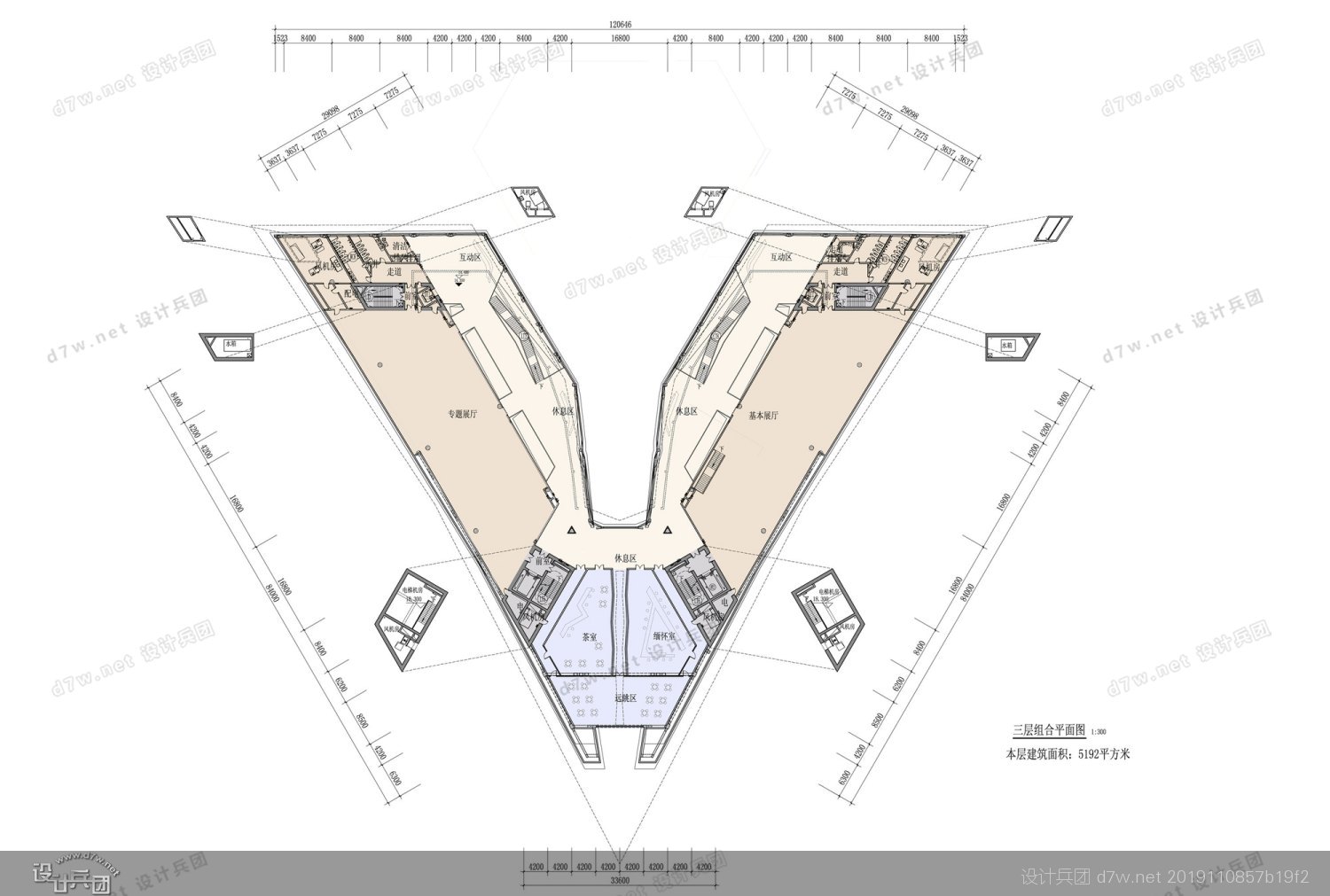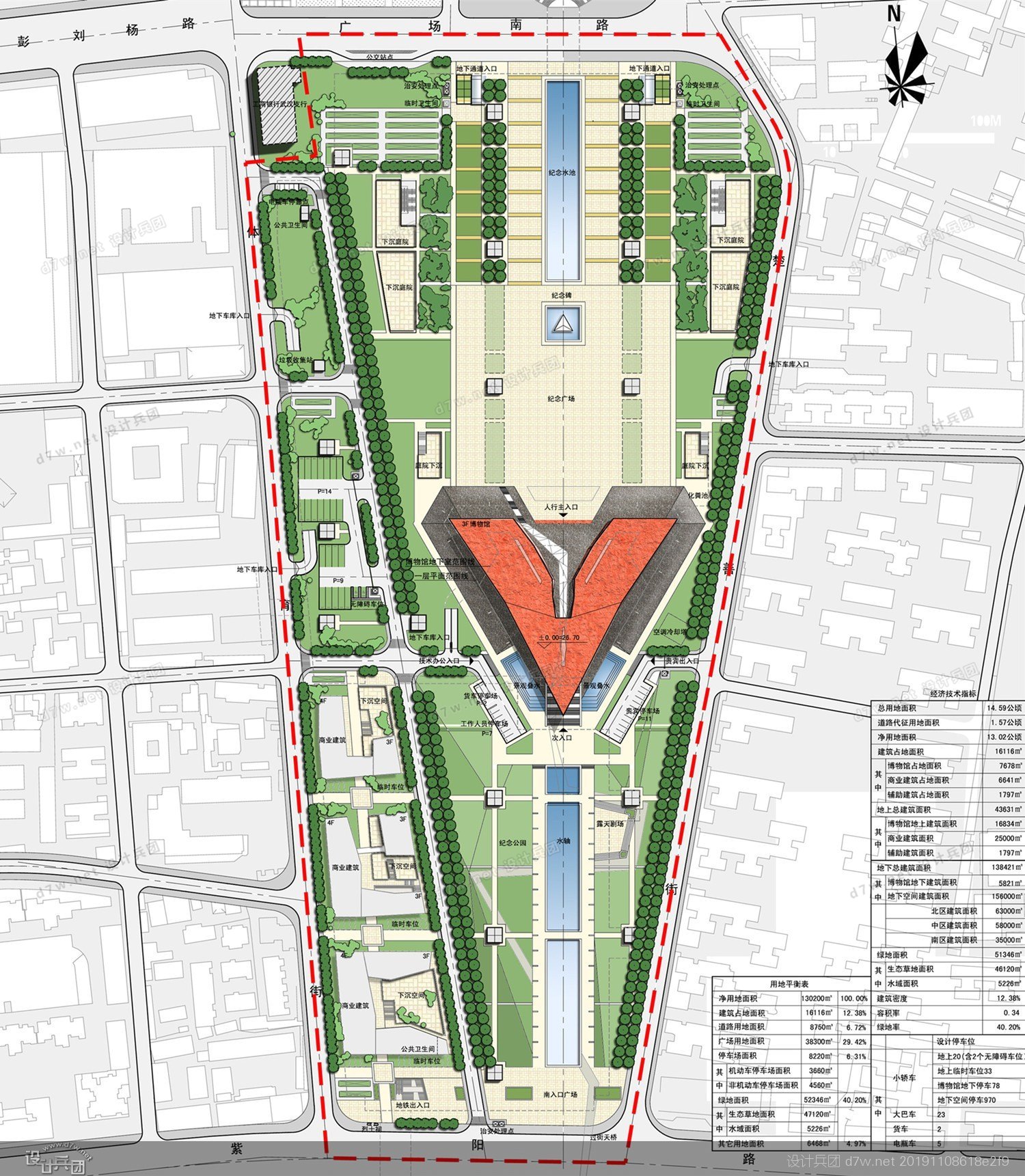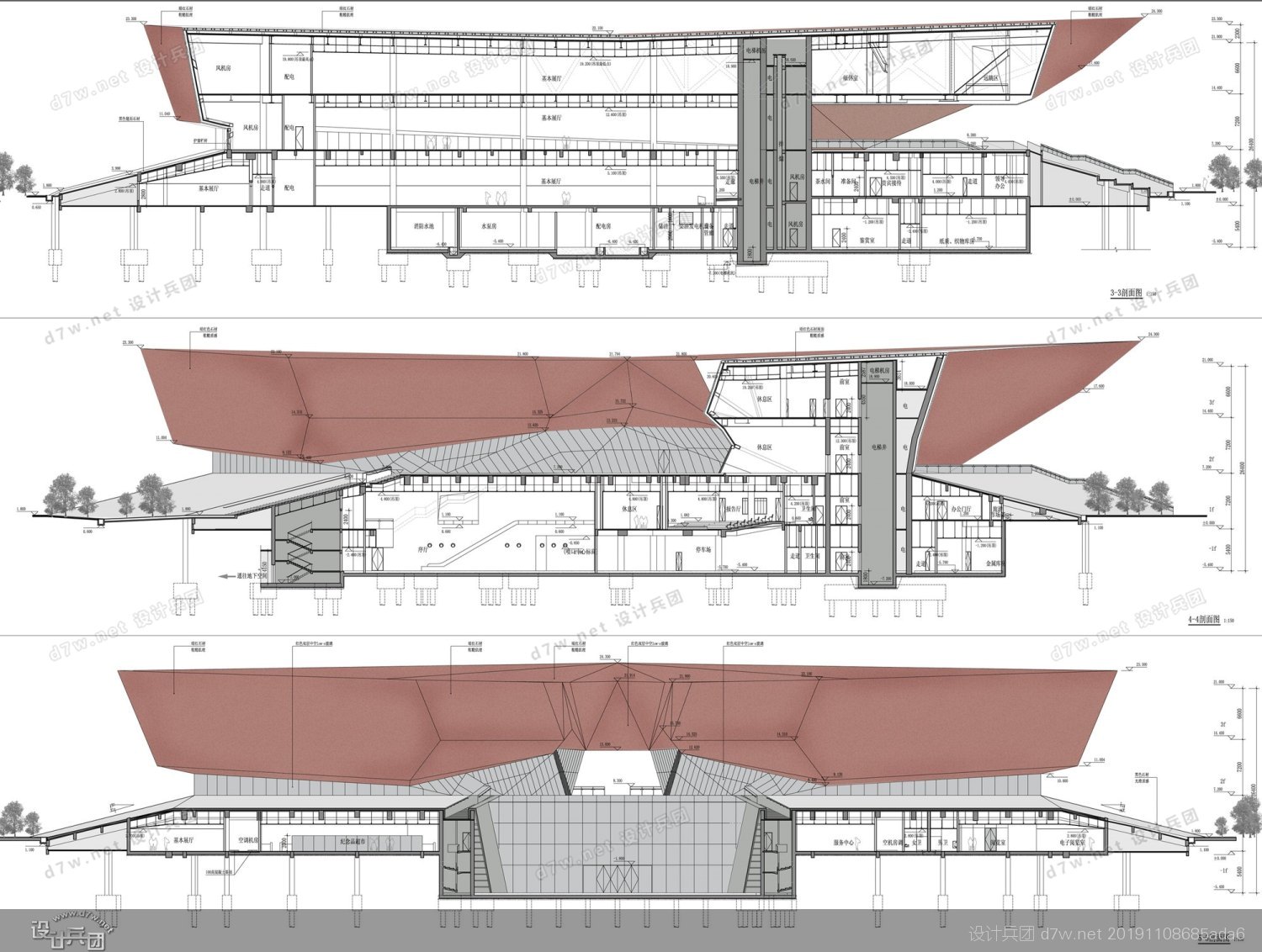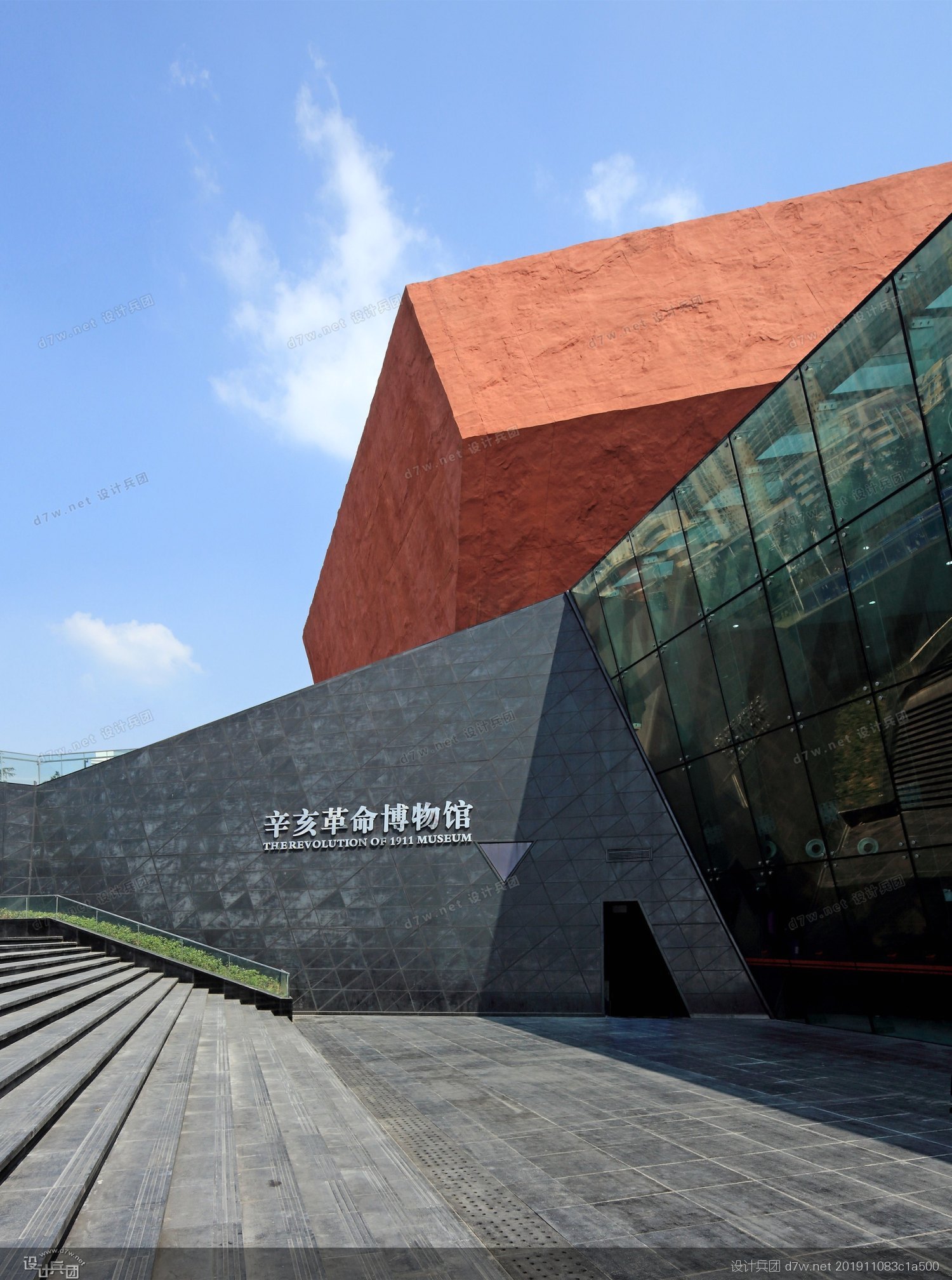
建筑师:CADI
类别:博物馆
地址:武汉, 中国
面积:22138.0 sqm
日期:2011
摄影:Zhang Guangyuan
Text description provided by the architects. 1911 Revolution Museum is a themed museum built to celebrate the 100th anniversary of the Revolution of 1911 Shouyi, Wuchang.
Located at the south side of Shouyi Square, Wuchang District, Wuhan, the Museum, together with the former address of Wuchang Uprising Military Government (the Red Building), the Bronze Statue of Sun Yat-sen, the Commander Title Granting Monument and the Martyrs Memorial Archway, constitute the sparkling cultural symbols of Shouyi Square.
1911 Revolution Museum, consisting of a lobby, 5 exhibition halls and 1 multi-functional exhibition hall, integrates together functions of display, cultural relics collection, publicity, education and scientific research. It is the museum enjoying the largest scale, best display technology, most reproduced scenes and most complete visiting guide system among all the museums themed with the Revolution of 1911.
Prominent Comprehensive Social Effects
1911 Revolution Museum, with construction started in August 2009 and finished in September 2011, was open to the public for free since October 2011 and has attracted accumulatively 1,360,000 visitors. It is not only the new cultural landmark of Shouyi Square, but also an important window for visitors at home and abroad to appreciate the Wuhan culture and feel the charms of Wuhan. The primary exhibits of the Museum-----The History of the Revolution of 1911----The Foundation of the Republic, is made up of five parts: China in the late Qing Dynasty, Origin of the Revolution, the First Uprising in Wuchang, the Establishment of the Republic and the Century since 1911. With the display of 428 pieces/sets of relics, 694 historic photos, 27 reproduced scenes of significant historical events, 12 pieces of artwork and 20 multimedia exhibits relating to the Revolution of 1911, the Museum demonstrates the historical changes of the revolution and the outstanding achievements of this “republic” foundation of China, in a multi-angle and profound way.
The Planning Enhances the Urban Environment
Culture Corridor and Triangular Composition
In combination with the urban and scenic culture, a culture corridor, made up of the Yellow Crane Tower and the Snake Mount Battery in the shape of regular triangle finally takes shape. The regular triangle itself reminds people of the positive and progressive attitude, which corresponds to the spirit of the Revolution of 1911.
Interactive and Open Public Space
Corresponding to the partially receding north side of the Red Building, the Museum and the U-shaped Red Building complex form an spatial enclosure and a interactive relation in form, indicating the historical echo and correspondence for the last century. No effort is spared to build the Museum into a friendly and open public space.
The connectivity of the buildings enables the extension and access to the southern and northern axis of the cultural area of Shouyi. Stepping along the stairs, citizens can go through the Museum, enjoying the closer relation with the architecture, and the closer relation between the architecture and the city.
Unity of Architectural Structure
Highly Unified Form and Structure
Folded plates and steel frame structure were adopted. The triangular batter posts on the building exterior act not only as the support of the outer curtain wall, but also the vertical support of the building. This unified design forms the regular but pillar-less exhibition hall and public space and finally achieves the perfect unity between architecture and structure.
Appropriate Spatial Structure Design
As for the folded plates and steel frame components, control line together with node detailing were used, which saved 45 days for the construction of the steel structure. Interconnected welded joints were used to connect all the folded plates and steel structure to form the space, which saved the construction period as well as the cost by RMB 1,800,000 compared with the cast iron joints.
The Architecture Inherits Regional Culture
Carry forward the Shouyi Spirit
1911 Revolution Museum, with unique outline design, blends the traditional architectural elements of China with the modern architectural features. The high-platform big-roof structure perfectly illustrates the “double roof” and the “overhanging eaves” of Chinese architecture; the geometrically uprising outer wall implies the first-uprising spirit of “dare to be the first”, the triangular architectural motif brings positive and innovative implication to the architecture, indicating the success of the First Uprising in Wuchang.
The Space Narrates the Historical Event
A Journey of Experience
Spatial narration method is used in the design, trying to tell the start, development, climax and end of the special historical event---the Revolution of 1911, to the public through the architectural language. Stepping down 5.4m from outside to enter the lobby, the visitors go through the noise-quietness—thoughts spiritual experience. The whole entrance lobby is located under the gentle slope, creating intentionally the dark governance and the great blood-shed atmosphere before the Revolution; walking upwards and entering the 2nd floor, the visitors may feel the hard spiral course of the Revolution; the exhibition hall and the outdoor display area introduce the natural light into the indoor space, creating a “there is another unexpected hope”; feeling. Visitors then will feel the explosion and unexpected changes of the Revolution; the 3rd floor is the highest part of the Museum, with an open terrace at the south side which enables you to look into the whole South Square and the Ziyang Lake and feel the endless glory of the Revolution when it reaches the climax. Visitors “look along the journey and feel in the heart” during the visit and their inner world will be sublimated. The process of visiting the Museum is also a journey of soul experience.
The Wall Made of Light Plates
In order to create the naturally carved texture, GRC plates are used for the inner and outer wall, with area reaching 11,000m2. This GRC outer wall, with large scale, consistent but irregular surface texture, maximum bump reaching 25cm and distinct sculptural style, is by now the first in China. Compared with traditional natural stone, the material used here is feature large size, rich and adjustable colors. Furthermore, it guarantees the continuity of the irregular texture and thus better expresses the spirits and special artistic atmosphere of the building.
Energy-saving Low-carbon Building Material
GRC plats are made of environment-friendly renewable materials, that is, abandoned rock powder and ballast. The light weight and high performance greatly reduce the usage of concrete; the low-carbon and environment-friendly features make it better comply with the “resource-saving and eco-friendly society” spirit. Compared with the dry-hanging marble outer wall, GRC plates reduce the structural member size. According to statistics, the Museum has saved totally about 300m3 concrete and about 160t steel.
Appropriate Technology---Green and Energy-saving
Green and energy-saving technologies appropriate to local climate was used. Central air-conditioner is powered by the frequency-conversion integrated refrigeration station. Here, the combination of maglev and all frequency conversion is the first in China and it has effectively reduced the energy consumption of the building. The refrigeration system in the building has further saved energy by 50% when compared to the published energy-saving standards.
Comprehensive Application of Digital Technology
The splayed outer wall on the north side of the Museum is designed in irregular polygonal shape and made up of a variety of triangle folded plates with different shapes and sizes. This complicated spatial structure can hardly be designed accurately with conventional design tools and methods.
The difficulty of “3D space” brought by the irregular shape and unrepeated outer wall blocks of the building is solved by using 3D design software RHINO, REVIT, CATIA, NAVISWORKS and TEKLA and through the integration by BIM technology and accurate 3D positioning of each block was realized finally. What’s more, by making use of the advantage that 3D model is easy to visualize, the difficulty in complex space in design was solved.
建筑师提供的文本描述。辛亥革命博物馆是为纪念辛亥革命100周年而建的主题博物馆。
博物馆位于武汉市武昌区首义广场南侧,与原武昌起义军政府驻地(红楼)、孙中山铜像、授勋碑、烈士牌坊等共同构成了首义广场的文化符号。
辛亥革命博物馆由1个大厅、5个展厅和1个多功能展厅组成,集展览、文物收藏、宣传、教育、科研等功能于一体。它是辛亥革命主题博物馆中规模最大、展示技术最好、再现场景最多、参观引导系统最完善的博物馆。
综合社会效益突出
辛亥革命博物馆于2009年8月开工建设,2011年9月竣工,自2011年10月起免费向公众开放,累计吸引游客1360万人次。它不仅是首义广场新的文化地标,也是国内外游客欣赏武汉文化、感受武汉魅力的重要窗口。博物馆的主要展品——辛亥革命历史——民国的建立,由五个部分组成:清末的中国、辛亥革命的起源、武昌的第一次起义、民国的建立和1911年以来的世纪。显示428件/套文物,694年历史照片,27再现场景的重大历史事件,12件艺术品和20多媒体展品有关1911年的革命,革命的博物馆展示了历史变化和这个“共和国”的杰出成就的基础,多角度深刻。
规划改善了城市环境
文化长廊和三角形构成
结合城市和风景文化,最终形成了由黄鹤楼和蛇山炮台组成的正三角形文化长廊。正三角形本身就提醒人们积极向上的态度,这与辛亥革命的精神相一致。
互动开放的公共空间
与红色建筑部分向北退缩相对应,博物馆与u型红色建筑综合体在形态上形成了一种空间围护与互动关系,体现了上世纪的历史呼应与呼应。不遗余力地把博物馆建成一个友好开放的公共空间。
建筑之间的连接性使其能够延伸和进入寿衣文化区域的南北轴线。市民可以沿着楼梯穿过博物馆,享受与建筑更紧密的联系,建筑与城市更紧密的联系。
建筑结构的统一性
高度统一的形式和结构
适宜的空间结构设计
折板和钢框架构件采用控制线加节点详图,节省钢结构施工时间45天。所有折叠板与钢结构之间采用连接焊接接头,形成空间,与铸铁接头相比,节省了工期和成本180万元。
建筑继承了地域文化
弘扬守义精神
辛亥革命博物馆以其独特的轮廓设计,将中国传统建筑元素与现代建筑特色融为一体。高平台大屋顶结构完美诠释了中国建筑的“双屋顶”和“悬檐”;几何形状的外墙寓意着“敢为第一”的第一次起义精神,三角形的建筑母题给建筑带来积极创新的寓意,预示着武昌第一次起义的成功。
创造历史的氛围
建筑造型具有雕塑感,给人以“刚毅、刚毅、高大、刚强”的视觉印象。外墙以天然的雕刻和风化纹理,在建筑中带来“破土而出,自然成形”的艺术效果,营造出深厚的历史氛围。
再现楚国的魅力
建筑外墙为红色,基础为黑色,既反映了博物馆的“革命”与“黑暗”的对比,也反映了古代楚国古典建筑的“红”与“黑”调。
空间叙述历史事件
体验之旅
设计中运用空间叙事的方法,试图通过建筑语言向公众讲述辛亥革命这一特殊历史事件的开始、发展、高潮和结束。从室外走下5.4米,进入大堂,体验动静-思想-精神的体验。整个入口大堂位于平缓的斜坡下,有意营造出革命前黑暗的治理和血腥的氛围;向上走,进入二楼,参观者可以感受到革命的艰难螺旋过程;展厅和室外展区将自然光引入室内空间,营造出“又一个意想不到的希望”;的感觉。届时,参观者将会感受到革命的爆发和意想不到的变化;三楼是博物馆最高的部分,南侧有一个开放的露台,可以看到整个南广场和紫阳湖,当革命达到高潮时,可以感受到革命无尽的荣耀。游客在参观过程中“看一路,心有灵犀”,内心世界得到升华。参观博物馆的过程也是一次心灵体验之旅。
这面墙是用薄钢板做的
为了营造自然的雕刻质感,内外墙面均采用GRC板材,面积达11000平方米。该GRC外墙规模大,表面纹理一致但不规则,最大凹凸达到25厘米,造型独特,是目前国内第一个。与传统的天然石材相比,这里使用的材料具有体积大,色彩丰富,可调节的特点。保证了不规则纹理的连续性,更好地表达了建筑的精神和特殊的艺术氛围。
节能低碳建材
GRC平台采用环保再生材料,即废弃石粉和压舱物。轻质、高性能大大降低了混凝土的使用量;低碳、环保的特点使其更符合“资源节约型、生态友好型社会”的精神。与干挂大理石外墙相比,GRC板减小了构件尺寸。据统计,博物馆完全节省了约300 m3混凝土和大约160 t钢。
适用技术——绿色节能
采用适合当地气候的绿色节能技术。中央空调采用变频综合制冷站供电。这里,磁悬浮与全变频的结合是国内首创,有效降低了建筑能耗。与公布的节能标准相比,大楼的制冷系统进一步节省了50%的能源。
数字技术的综合应用
博物馆北侧的张开外墙设计成不规则的多边形形状,由各种形状和大小的三角形折叠板组成。传统的设计工具和方法很难对这种复杂的空间结构进行精确的设计。
利用RHINO、REVIT、CATIA、NAVISWORKS、TEKLA等三维设计软件,通过BIM技术的整合,最终解决了建筑不规则形状和不重复外墙砌块所带来的“三维空间”难题,实现了各砌块的准确三维定位。利用三维模型易于可视化的优点,解决了复杂空间设计的难题。

